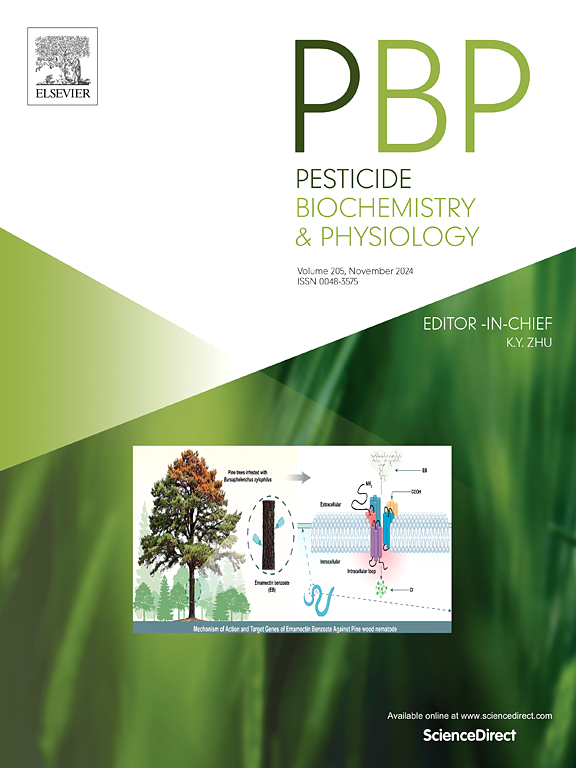Effects of Pro197 resistance mutations occurring in different acetolactate synthase (ALS) isozymes on Descurainia sophia L. resistance to tribenuron-methyl
IF 4.2
1区 农林科学
Q2 BIOCHEMISTRY & MOLECULAR BIOLOGY
引用次数: 0
Abstract
Descurainia sophia L. is one of the most problematic broad-leaf weed infesting winter wheat in China, and have evolved resistance to acetolactate synthase (ALS)-inhibiting herbicide of tribenuron-methyl. At least four ALS isozymes (ALS1 ∼ ALS4) exist in D. sophia, but these four ALS isozymes are not present in all D. sophia. In addition, amino acid mutations in ALS are mainly responsible for D. sophia resistance to tribenuron-methyl. In this study, D. sophia populations carrying homozygous mutation of Pro197Ser/Thr/Leu/Ala/His in ALS1 or in ALS2 were purified, respectively. Resistant D. sophia populations carrying mutant ALS exhibited 17 ∼ 694 folds resistance to tribenuorn-methyl. In addition, tribenuron-methyl resistance in D. sophia carrying ALS1 mutation was about 2.3 ∼ 11.4 folds higher than D. sophia with the same mutation in ALS2. The reduced binding affinity of ALS to tribenuron-methyl was mainly responsible for D. sophia resistance to tribenuron-methyl. However, the increase in resistance of D. sophia was not linear with the decrease of binding affinity of ALS to tribenuron-methyl. These results indicate that the effects of resistance mutations on ALS1 and ALS2 isozymes are not the same, and the ALS1 and ALS2 function differently in resistance evolution of D. sophia to tribenuron-methyl.

求助全文
约1分钟内获得全文
求助全文
来源期刊
CiteScore
7.00
自引率
8.50%
发文量
238
审稿时长
4.2 months
期刊介绍:
Pesticide Biochemistry and Physiology publishes original scientific articles pertaining to the mode of action of plant protection agents such as insecticides, fungicides, herbicides, and similar compounds, including nonlethal pest control agents, biosynthesis of pheromones, hormones, and plant resistance agents. Manuscripts may include a biochemical, physiological, or molecular study for an understanding of comparative toxicology or selective toxicity of both target and nontarget organisms. Particular interest will be given to studies on the molecular biology of pest control, toxicology, and pesticide resistance.
Research Areas Emphasized Include the Biochemistry and Physiology of:
• Comparative toxicity
• Mode of action
• Pathophysiology
• Plant growth regulators
• Resistance
• Other effects of pesticides on both parasites and hosts.

 求助内容:
求助内容: 应助结果提醒方式:
应助结果提醒方式:


